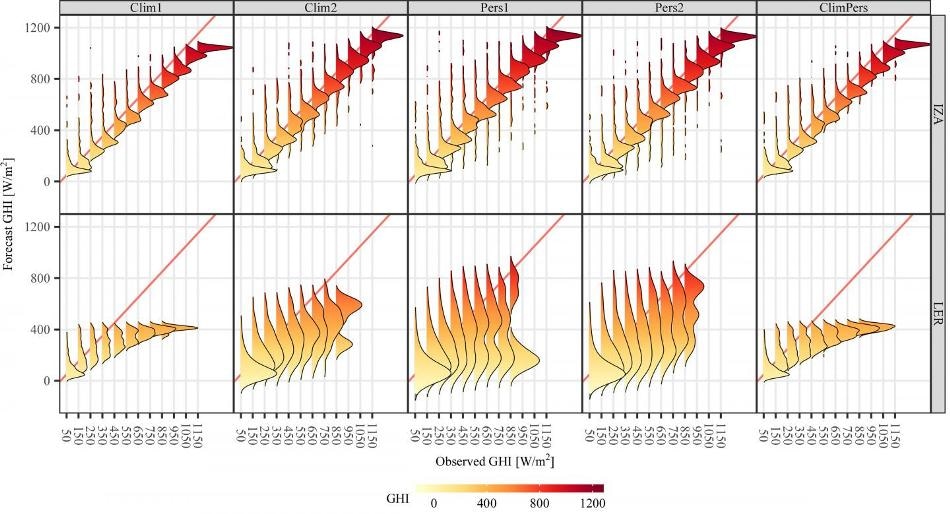Sep 25 2019
Accurate prediction of the amount of solar energy that reaches the Earth’s surface is crucial to make decisions for operating solar power plants.
 This ridgeline plot visualizes the conditional distribution of forecasts given observations at two weather stations with the lowest and highest accuracy scores. (Image credit: Dazhi Yang)
This ridgeline plot visualizes the conditional distribution of forecasts given observations at two weather stations with the lowest and highest accuracy scores. (Image credit: Dazhi Yang)
In recent years, day-ahead forecasts have become more accurate, yet, the solar community lacks a standardized verification process. Hence, it is challenging to evaluate how one forecast compares to another. A new study reported in the Journal of Renewable and Sustainable Energy, from AIP Publishing, aims to offer a standard of reference to the field.
Researcher Dazhi Yang put forward an optimized technique for evaluating day-ahead solar forecasting. The new method is a combination of two well-known reference methods for weather forecasting—climatology and persistence. His method involves the use of a weighted linear combination of both methods to provide a new way to assess a forecaster’s expertise.
There is a large collection of solar forecasting works in the literature. However, all papers claim superiority, which is clearly not possible. Without a standardized reference method to gauge forecast accuracy, we cannot compare methods reported in different papers, using different data from different locations and timescales.
Dazhi Yang, Researcher
In persistence reference method, it is assumed that weather does not vary from one day to the next, and the next day’s forecast can be derived from today’s observations. Climatology generates a forecast by investigating the long-term averaged observations over time.
It’s generally unclear which type of forecast is more accurate, making it difficult to determine the best forecasters. A standard of reference is much needed in the community, so that forecasters can calculate the skill score and thus perform a direct, ‘apples-to-apples’ comparison.
Dazhi Yang, Researcher
Yang demonstrated the versatility of the proposed method by applying the framework to a dataset taken from the Baseline Surface Radiation Network. The 66 stations of this network—which has been operating for 27 years—can be located on all seven continents and on an island in each ocean.
For certain applications, the combined method proposed by Yang was found to be more optimal compared to either persistence or climatology alone.
He observed that his combined approach is optimal if the aim is to evaluate the reliability of a forecast. By contrast, if the aim is to enhance how much a forecast could differentiate between different forecasting conditions, then forecasters must use a form of the persistence approach that takes the hourly variations in weather into account.
According to Yang, conditional findings such as these could offer a solution for why there is a lack of consensus in the first place. Yang believes that journal editors could be helpful in making this framework the standard of reference for day-ahead solar forecasting, as they can reinforce the profile of the new reference approach.